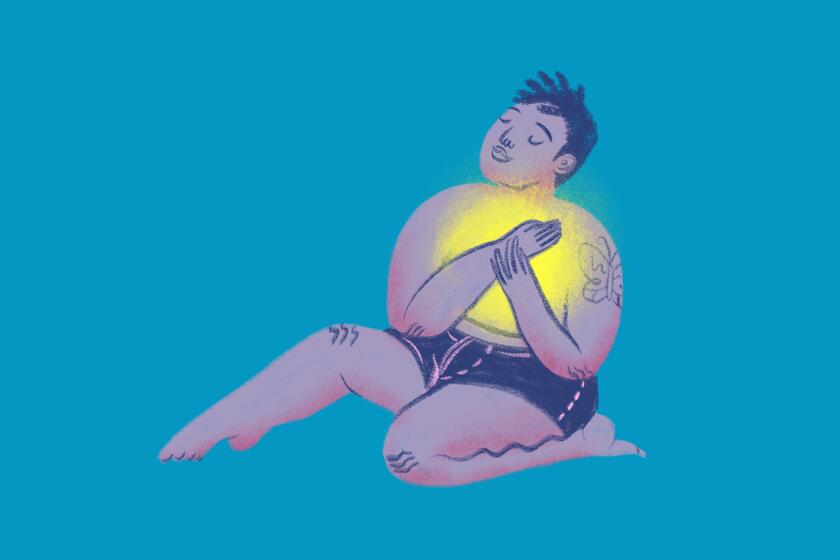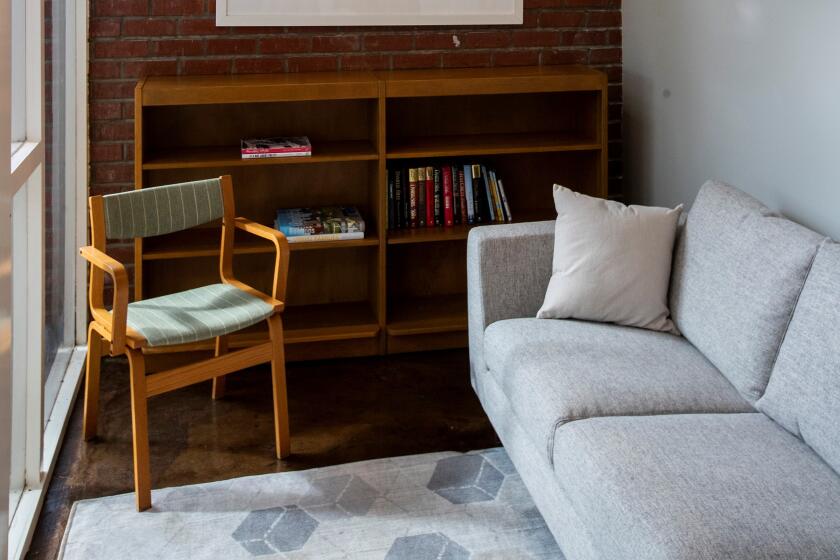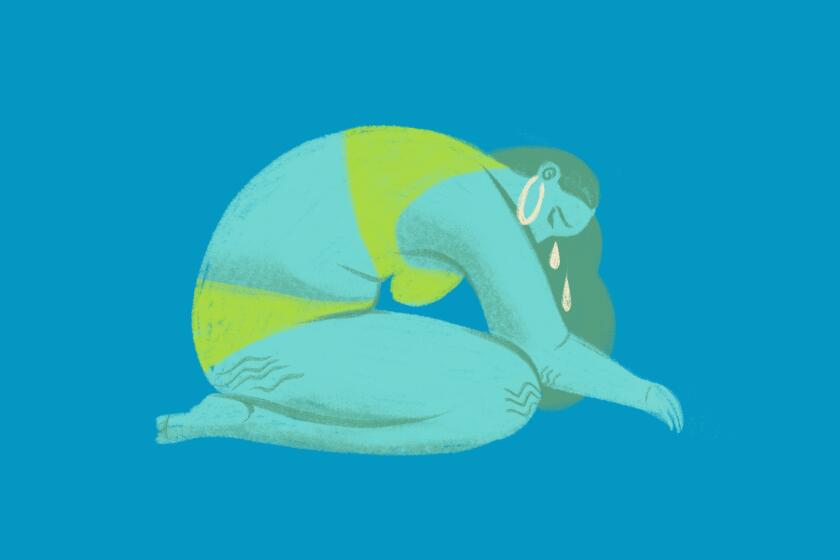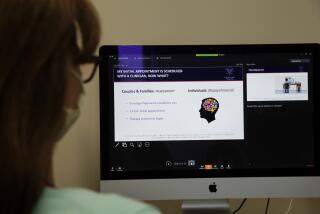Tech is making mental healthcare more accessible. What you need to know about video and text therapy
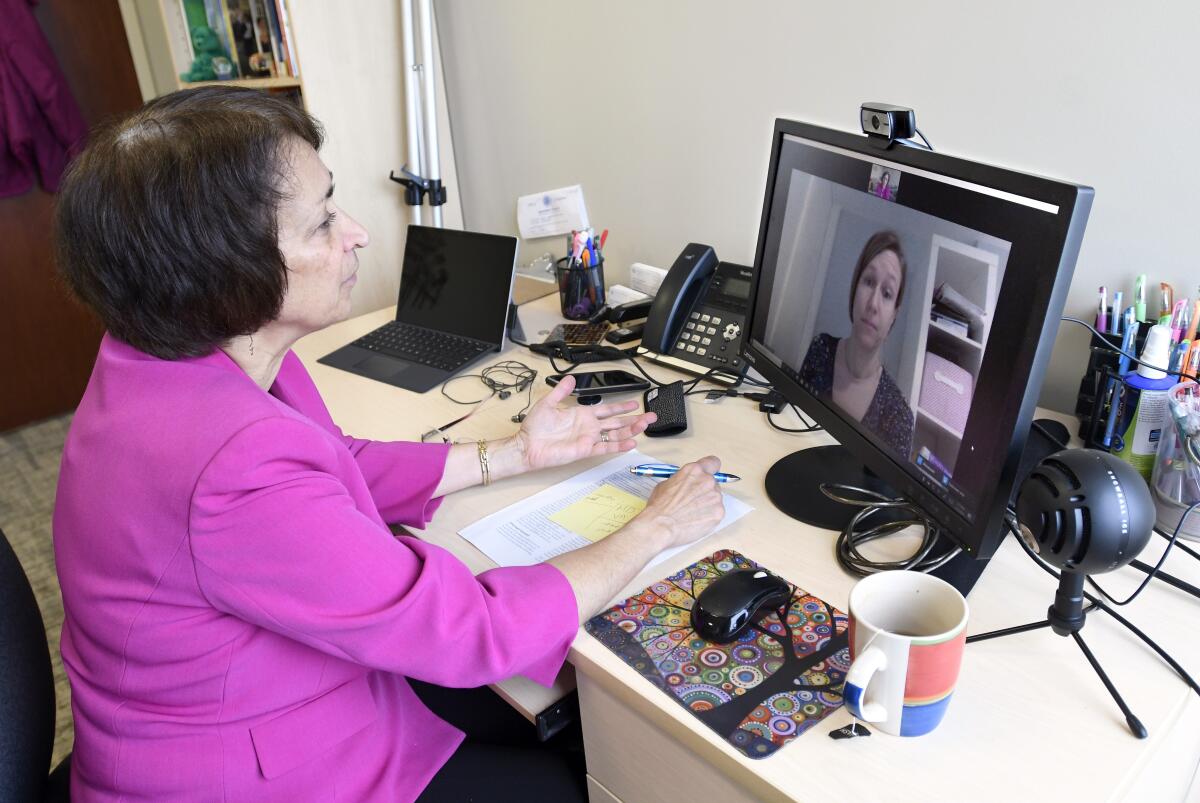
When Vivian Oberling, a licensed clinical psychologist, first met the cofounders of mental health startup Pace Group — early employees of Pinterest, LinkedIn, Facebook and Google — she was skeptical.
“I thought, it’s a tech company that wants to do mental health; there’s so many in the field,” she said. “I’m going to go in with an open mind, but I’m ready to tell them everything that is not going to work.”
She didn’t expect that she’d end up closing her private practice last year in order to join them.
There can be tension between the technology and healthcare industries. Tech companies often propose strategies to help make healthcare more accessible, but clinicians may raise concerns about whether it’s effective.
“Initially, it is driven by convenience and we study impact afterward,” said Thomas Derrick Hull, a psychologist and researcher at Talkspace who has studied text therapy for depression, anxiety and PTSD.
Many researchers now agree that mental healthcare is well-suited for telehealth. But for the most part, until recently, licensed clinical therapists have only been educated and trained in traditional in-person therapy.
Are there limits to therapy over video and text messaging? How can clinicians and clients adapt to the different mediums? Here’s what some of the research shows, what your options are and what might work best for your particular situation.
The coronavirus pandemic, wintertime, the daily stressors of life — it all can take a toll on our mental health. Here are some resources to help you understand therapy, find a therapist and more.
The pandemic has normalized therapy over video
Dr. Curley Bonds, the chief medical officer of the L.A. County Department of Mental Health, said that before the pandemic, they had a telehub of eight to nine computers where therapists video-conferenced with clients in areas like the Antelope Valley, where it’s been more difficult to recruit staff.
Since the pandemic limited in-person visits, they do 50 times as many sessions over video.
Telehealth in general was not widely practiced before the pandemic. Insurance didn’t cover telehealth visits, so medical providers could not bill for it. There were also restrictions against using videoconferencing platforms that weren’t HIPAA-compliant, so providers couldn’t use FaceTime or the free version of Zoom. Early in the pandemic, the government loosened the regulations in an attempt to minimize in-person contact and spread of the coronavirus.
“The preference is to do as close to in-person as we can,” said Bonds, and many therapists still prefer being in a room with someone, having the connection and intimacy of sitting face-to-face and looking at another person.
There are also situations where in-person visits are better; for example, if a patient needs monitoring for the physical side effects of medication.
But, as reported by the Harvard Business Review, numerous studies show that mental healthcare through digital and virtual mediums can be just as effective as in-person care.
Dr. Sarah Nguyen, a psychiatrist, assistant professor and associate director of the UCLA Integrative Psychiatry Clinic, said she’s grateful the industry has been able to transition so seamlessly to video therapy during the pandemic.
“I kept a lot of my patients stable as a result,” she said.
But while she thinks her clients love the convenience of telehealth and have received effective treatment over video, she also believes people don’t realize what they are missing.
“I recently saw a patient in person for the first time in over six months, even though I see her on video every week, and we were both humbled by the power of presence that brought a deeper element that we had both forgotten,” she said.Who might benefit from video therapy
Those with barriers to travel: “There’s long been a gap between people who can provide care and people who want it and need it,” said Hull, who grew up in rural Arizona and saw the challenges to access firsthand.
Bonds thinks of his agency’s clients who need to give up half a day’s pay and take two buses and a train in order to get care. He also points to juvenile corrections facilities that have been able to use video conferencing to provide mental healthcare support to those who aren’t able to be in the same room with their peers.
Those who need specialists: Before the pandemic normalized video therapy, Nguyen, who is an adult and geriatric psychiatrist, had seniors who traveled two hours each way in order to see her for 30 to 45 minutes because it was that hard to find a specialist who could treat their needs.
“That’s a four-hour commute, and they need a caregiver to bring them,” she said. “The coordination is so cumbersome. But now, with telehealth, a daughter who is living out of the state can also jump on a Zoom with us.”
Those struggling to find a therapist who is a good fit: “The clinical research is very clear that the vast majority of the outcomes that clients and patients experience can be explained by quality of relationship with therapist,” said Hull. “And digital can make it easier to find the best therapist for you.”
This is especially true for people seeking therapists who are sensitive to specific cultures, genders, sexualities and disabilities, psychologist Anjali Alimchandani said.
“Given the dearth of psychotherapists with these backgrounds, the expansion and normalization of video sessions has enabled people to connect with psychotherapists all over the state, which increases the likelihood that they can connect with psychotherapists that have the social identities and clinical experiences and skills they are seeking,” she said. “For some clients, this can improve their rapport, connection, and overall experience in psychotherapy.”
It’s been a rough year, and maybe you are considering therapy for the first, second or fifth time. It takes patience and effort to find the right therapist. Here’s a breakdown of what you need to know.
Those with social anxiety: Alimchandani said video sessions can be better for particular psychological struggles; for example, “severe anxiety that can make coming for in-person sessions untenable at first. Over time, the hope is that the person can build capacity and skills to attend in-person sessions.”
Those dealing with difficult issues that come with a lot of stigma: “Some things are easier to share virtually,” said Bonds, referring to clients who may find it challenging to share a history of sexual or other abuse. “You can open up more easily when there is more physical space.”
How to adapt from in-person care to video
There’s a lot of nonverbal communication and body language that is lost over video therapy because the screen often limits the view to a person’s head and shoulders.
It’s also harder to see things like whether someone’s leg is fidgeting, so clinicians need to make extra efforts to make sure they aren’t missing anything.
“We’re problem solvers,” said Nguyen. “We gather the facts that you as a patient might not even be aware of, but we’re only as good as what you present.”
But there are also benefits, one being that clinicians get a window into the client’s natural habitat.
“I can see what their household involves, and the psychosocial stressors, the social determinants of health, are more in the forefront,” Nguyen said. “I’ve had people do their sessions from their cars. What is your inner life that you don’t have a moment to yourself unless you go in your car?”
What is therapy and what happens in a session? What kinds are available? An introduction to a critical tool for better mental health.
Text therapy is relatively new, but the research is promising
Bonds pointed to crisis hotlines that already have texting options to accommodate those who may not otherwise be able to talk freely; for example, domestic violence victims living in the same place as their abuser.
The research about the efficacy of therapy over text message, as popularized by apps like Talkspace and BetterHelp, is limited. Hull said that it will take several years to confirm early findings in larger trials.
But much of the data so far shows positive results, in terms of outcomes and symptom reductions.
“It looks better than anyone would have predicted, and it’s going to force us to think through how our models of therapy work,” Hull said.
Carly Schwartzman, a doctoral student in clinical psychology at the University of Albany, SUNY, cowrote a 2020 study on the topic.
Generally, Schwartzman said, text therapy may not give enough support to those with more severe symptoms; for example, those dealing with psychosis, suicidal thoughts or very active mania.
But she said, “it’s human nature to connect, no matter what medium you’re communicating on.”
“You can be texting a friend how you’re feeling, and they can respond and you can feel support,” she added. “You can be writing love letters back and forth and feel an emotional connection through words. Why can’t that be a part of therapy?”How text therapy works
“This shatters the idea of traditional psychotherapy,” Schwartzman said. “There’s no verbal or visual cues in terms of spoken language. It’s a completely different environment and it really requires therapists to adapt their style of communication.”
There’s synchronous text therapy, which is like a live chat, and asynchronous, which is texting with a clinician who might respond a couple of hours later.
“The dominant structure is to have contact at least once a day, sometimes two times, once in the morning and another time in the afternoon,” Hull said.
He explained that Talkspace research so far has not shown obvious differences in efficacy between response frequency (how many times to chat per day) or what time of day is best. This gives therapists some flexibility to determine what is best for the individual and situation — and to set boundaries.
It’s also important to understand that platforms like Talkspace and BetterHelp that offer “therapy-on-demand” through text also have video options. So theoretically, a good clinician would be able to assess whether texting is not working for someone and refer them to another form of care.
“Because it’s so new, all therapists who do message-based care are not only trained in message-based care,” Hull said. “All of them have a sensitivity to the power of being in a traditional in-person environment. … If the user needs another medium, they can make that call.”How to adapt to message-based care
“Online language channels carry fewer messages per instant than face-to face ones, where you can see hand movements and facial expressions,” said Schwartzman. “So it takes more exchanges back and forth to get to the same relational understanding.”
But there are also potential benefits for text therapy.
“The clinician can get a better feel for a person’s ups and downs,” said Hull. “When you hear from them every day, you get more insight to the trajectory they go through during the week.”
Therapists also have more time to process and react with text therapy.
“If a patient shares something with me in the moment, I only have a couple of seconds to respond,” Hull said. “But over messaging, you have a chance to sit with it more. It gives you more time to think about how to approach it, put together a more considered treatment plan.”
And there’s a record of the therapy to review and observe progress, Schwartzman pointed out.
“I think there are a plethora of ways that having a transcript to be able to look back on at a future time could be useful,” she said.Who might benefit from text therapy
Those with chaotic schedules: Hull said many people who gravitate toward text therapy travel a lot for work, are working parents or caregivers — people with life situations that make it hard to commit to a regular hourlong session.
A younger generation: Hull said Talkspace users’ ages predominantly range from the mid-20s to early 40s.
But that doesn’t mean it’s less effective for older populations, he said. But they are harder to study because they’re less likely to try it.
Those who feel a lot of stigma seeking therapy: Hull said Talkspace’s research shows that the majority of people who use mental health apps are trying therapy for the first time.
Because there’s a low barrier to entry, it can be a way to build comfort with the practice. Talkspace’s exit surveys show that many people who leave decide to pursue other types of care.
Those who need therapy quickly: It can be hard to find a therapist who is right for you. And when you find one, it’s common to have to wait weeks or months for an opening. These apps allow you to start within 24 hours, so some use them as support before they can get therapy more traditionally.
It can also be difficult, time-consuming and emotionally taxing to change therapists for in-person therapy if one isn’t working. In digital apps, you can switch to a new therapist in the same day.
Those who can’t afford traditional in-person therapy: Some people have insurance that will cover therapy. But many will find that their insurance only covers a small portion of their therapist’s bills and that they’ll end up paying $200 to $300 a session. Talkspace plans start at $99 a week, while BetterHelp plans go from $60 to $90 a week.
It’s been a rough year, and maybe you are considering therapy for the first, second or fifth time. It takes patience and effort to find the right therapist. Here’s a breakdown of what you need to know.
Other digital mental health tools
Pace Groups, which had its beta launch earlier this month, looks to provide digital mental health support outside of therapy.
It matches a group of six to 10 people who are going through a similar situation for 12 weekly video sessions with trained facilitators, with the option to pause or continue to the next “season.” They’ve developed groups for people navigating dating, relationship challenges, divorce or separation, motherhood and careers.
“We really believe mental health should be thought of as mental fitness,” cofounder Cat Lee said.
Their name is a nod to long-distance running: “When you’re training for a marathon, you join a pace group with people you can run with and figure out your rhythm,” Lee said.
As former executives of Pinterest and Affirm, Lee and cofounders Jack Chou and Alex Shye are also working with founding psychologists Oberling and Dr. Kerry Makin-Byrd to develop a platform for group members to support each other during the week outside of the video sessions.
Their goal is to bring together the best of social media and mental healthcare — and provide it at a comparatively lower price, $45 a week.
Schwartzman welcomes these various attempts at moving the mental healthcare industry forward.
“In-person therapy is so meaningful, and it’s never going to be gone. For some people, that’s really what they want and need,” Schwartzman said. “But this technology is here to stay in some shape or form and it’s important to figure out how to do it well.”
The coronavirus pandemic, wintertime, the daily stressors of life — it all can take a toll on our mental health. Here are some resources to help you understand therapy, help you find a therapist and more.
More to Read
Sign up for The Wild
We’ll help you find the best places to hike, bike and run, as well as the perfect silent spots for meditation and yoga.
You may occasionally receive promotional content from the Los Angeles Times.
